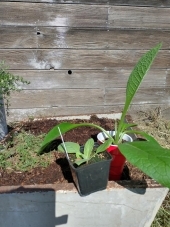
 6
6





 4
4




List of Bryant RedHawk's Epic Soil Series Threads We love visitors, that's why we live in a secluded cabin deep in the woods. "Buzzard's Roost (Asnikiye Heca) Farm." Promoting permaculture to save our planet.
 1
1




















List of Bryant RedHawk's Epic Soil Series Threads We love visitors, that's why we live in a secluded cabin deep in the woods. "Buzzard's Roost (Asnikiye Heca) Farm." Promoting permaculture to save our planet.
 2
2




 2
2




This is all just my opinion based on a flawed memory





Julie Wolf
Growing in a NW Forest - Clearcut Garden http://organicfoodbliss.com/my-clear-cut-garden/ / Northwest Permaculture Convergence http://www.northwestpermaculture.org/ - see my Directory Listing (Mason County).
















List of Bryant RedHawk's Epic Soil Series Threads We love visitors, that's why we live in a secluded cabin deep in the woods. "Buzzard's Roost (Asnikiye Heca) Farm." Promoting permaculture to save our planet.
 1
1












Julie Wolf
Growing in a NW Forest - Clearcut Garden http://organicfoodbliss.com/my-clear-cut-garden/ / Northwest Permaculture Convergence http://www.northwestpermaculture.org/ - see my Directory Listing (Mason County).




 2
2




Lori Haga wrote:I have been reading and researching using Phasmarhabditis hermaphrodita nematode to get rid of slugs. I’m not seeing anything new in 2 years. Is there any new information on where I can buy this species of nematode in the USA?
Julie Wolf
Growing in a NW Forest - Clearcut Garden http://organicfoodbliss.com/my-clear-cut-garden/ / Northwest Permaculture Convergence http://www.northwestpermaculture.org/ - see my Directory Listing (Mason County).





|
WARNING! Do not activate jet boots indoors or you will see a tiny ad:
A PDC for cold climate homesteaders
http://permaculture-design-course.com
|



